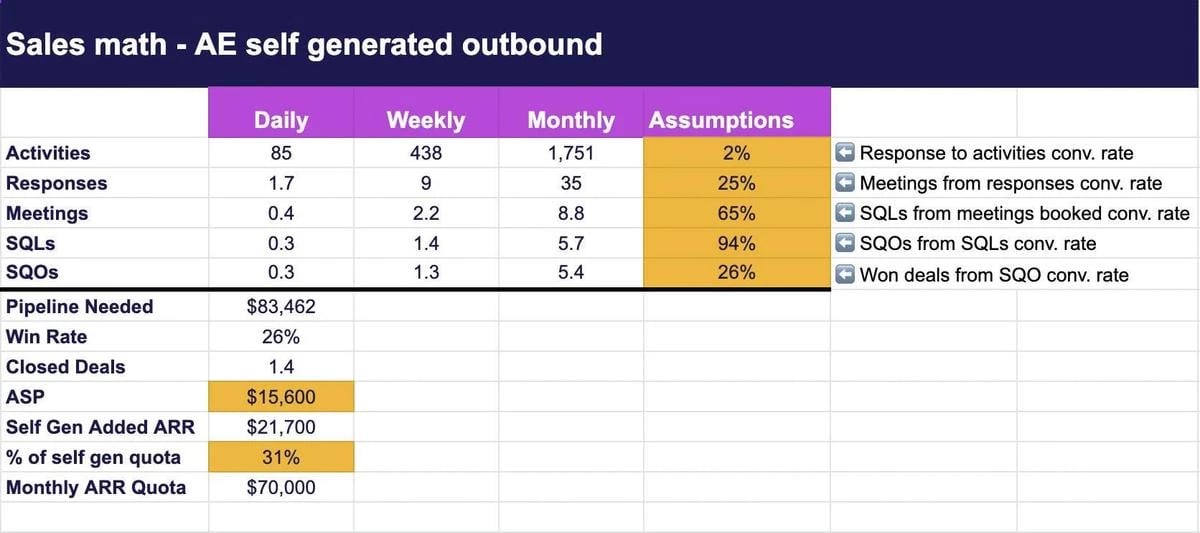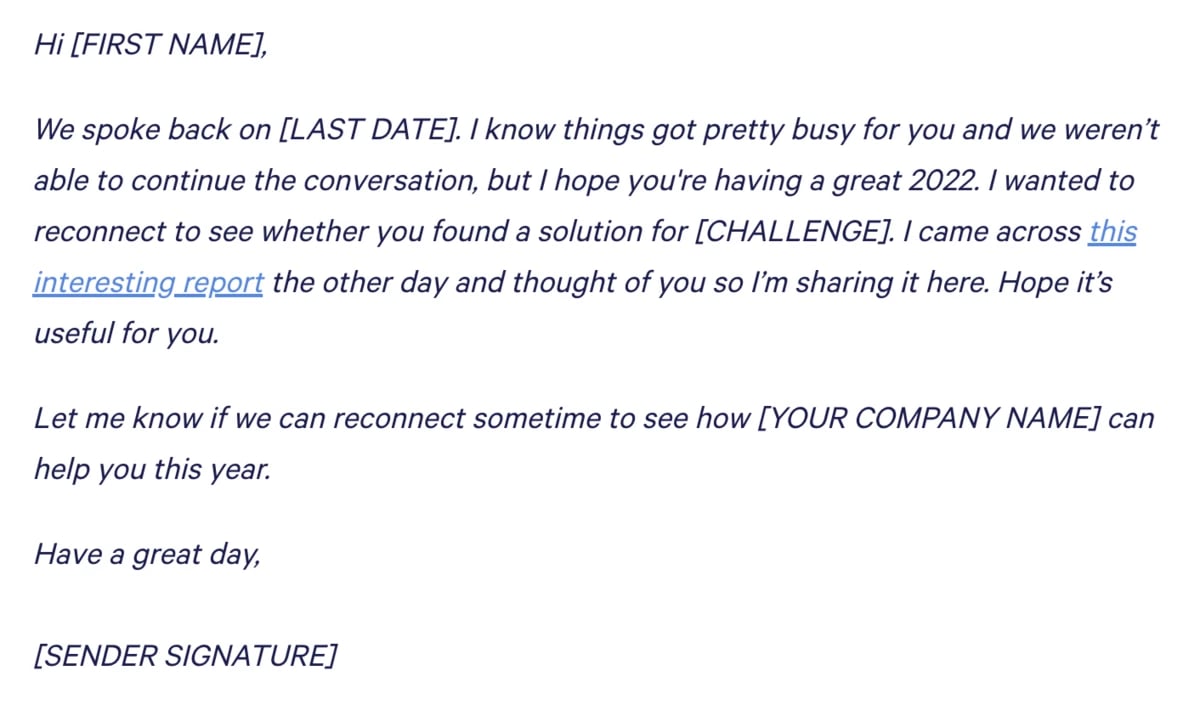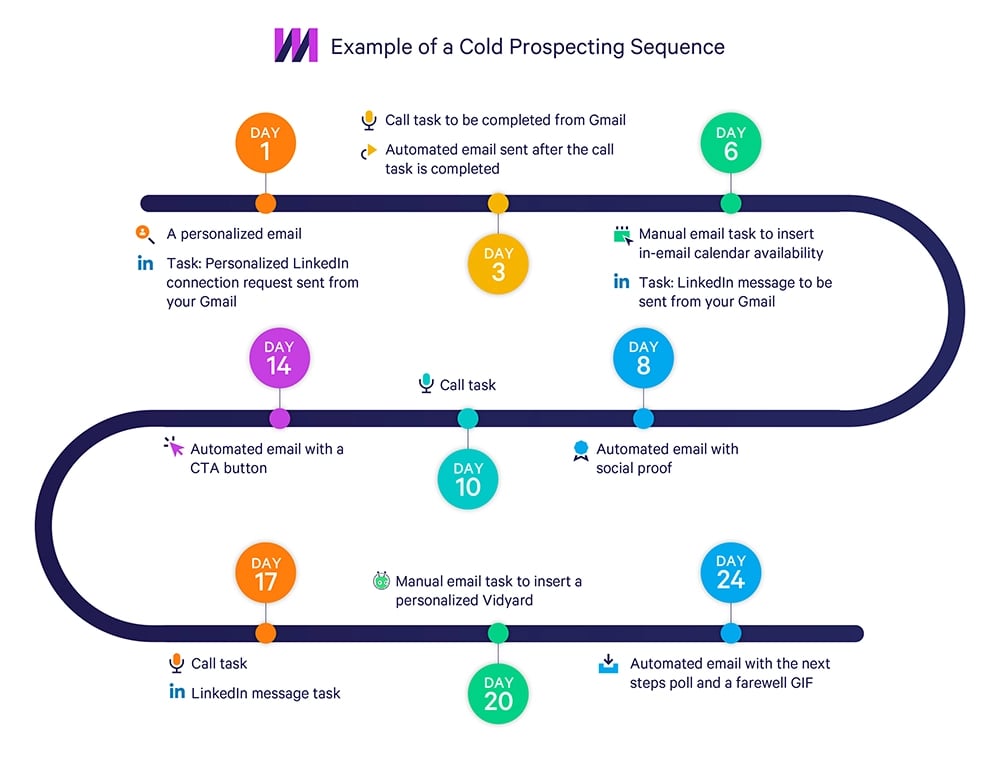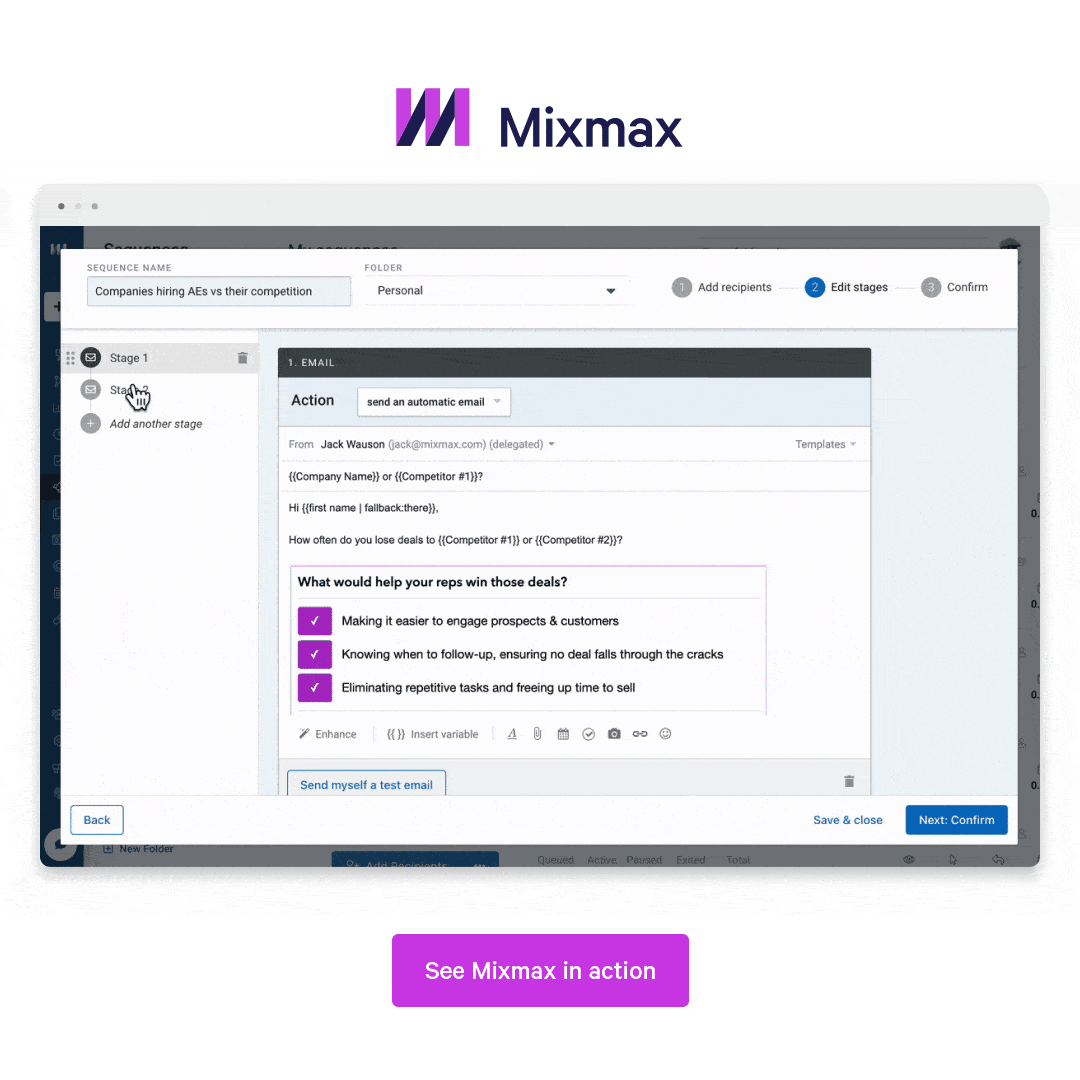June 3, 2022
Sales Productivity: The Definitive Guide to Grow Sales

- What is sales productivity?
- Why is sales productivity important?
- How can you measure sales productivity?
- 7 strategies to increase sales productivity
- 6 Tools for improving sales productivity
- Closing time
- Frequently asked questions about sales productivity
You’re probably here because your sales teams are doing their best, but somehow they’re not hitting the numbers you need.
And that affects your bottom line and team morale, and can even cause burnout.

Maybe you just need to hire more of them?
Nope.
If your revenue teams aren’t operating at peak efficiency and effectiveness, hiring more is unlikely to improve your results. But it will add to your overheads, and sow panic among your reps if there isn’t enough opportunity to go around.
Instead, the answer lies in tracking and measuring sales productivity so you can empower your teams to achieve more with less.
It’s our mission to help you do that, so we reached out to leading sellers to ask them:
- What sales productivity is
- Why and how you should measure it
- 7 strategies to make your reps more productive
- Which tools you should invest in to boost sales productivity
Ready to start crushing it? Let’s go.
What is sales productivity?
Sales productivity is a measure of how efficient a salesperson or team is (what they put into the job in terms of time, resources, etc.) and how effective they are (the results they achieve with that time or resources).
In theory, the more efficient they are, the more effective they can potentially be. But it’s not just about getting faster or better at things. You can make a thousand calls a day but if none of them land a meeting, your effectiveness is still going to be rock bottom.
Sales productivity is about doing the right things. At scale.
Why is sales productivity important?
Bottom line, it’s all about the bottom line.
“Cash is like oxygen for a business,” says Patrick William Joyce, Business Development Advisor at regie.ai, “Without revenue, jobs are lost and businesses die.”

If your sales teams aren’t productive, and you’re not hitting targets, your company can’t grow. Plus, having a professional sales force is expensive. If it’s not generating results, the company will eventually fail.
Low productivity also has consequences beyond the balance sheet. Success and failure are contagious and struggling sales teams get demotivated–especially as their salary is tied to results. Without support from sales managers to improve, they’ll get caught in a downward spiral of low morale and worsening performance leading to resignations.
When you know how productive your teams are at each stage of the sales cycle, you can spot struggling teams or individuals, provide targeted support, and take strategic actions to help them improve.
How can you measure sales productivity?
To track sales productivity, first, define what it means for your company. What numbers do you need for each individual and your entire team to be successful?
Think about all the steps in your buyer journey and sales processes. Some sales take only a single interaction; others are more complex and take a significant investment of time and resources. When you know the key factors that affect outcomes, you can determine your KPIs and harvest data from rep surveys, qualitative interviews, and CRM analytics.
Metrics you might track include:
- Calls made
- Emails sent
- Number of prospects added to a sequence
- Opportunities generated
- Value of opportunities generated
- Training certifications; do reps know what they need to know to do a good job?
Be smart about what you track, though. As Patrick William Joyce warns, “The number of phone calls or emails can be a leading indicator for pipeline volume. But if you set up the goals within those metrics, it promotes behavior that inflates vanity metrics. Reps will make calls they know aren't going anywhere to log daily minimums and protect their livelihood.” Instead, he recommends tracking conversion metrics: How many conversations convert to a meeting booked? How many meetings convert to a sales opportunity, etc.?
Reach out to sales communities and professional sales organizations to check benchmarks for your industry so you understand what you should be aiming for. You can also use tools like the Bridge Group’s performance grader.
-2.webp?width=593&name=ezgif.com-gif-maker%20(1)-2.webp)
Once you’ve figured out your KPIs, measure sales productivity by dividing them by a timeframe or another metric.
For example, if you define sales productivity as % of meetings booked, then:
Number of meetings booked (aka effectiveness)
÷
Total number of emails or calls made (aka efficiency)
x 100
= sales productivity
Other ways to measure sales productivity include:
- Whether reps are hitting quota over X months/quarters, and what resources it takes for them to get there
- How fast new reps ramp to hit quota
- Number of SQLs or meetings booked vs rep’s time with the company
- Value of closed deals vs the time or number of actions it took to close the deal
- Revenue generated vs the cost of employing a sales team
7 strategies to increase sales productivity
Here’s how to take the strategic approach to boost sales productivity.
1. Have a 6-month rolling plan
Sure, you need an annual plan, but markets change. So unless you’ve got a crystal ball up your sleeve, you need some wriggle room.

Having a 6-month plan gives you the flexibility to revisit and tweak it as the year and business conditions unfold.
Here’s where tracking sales productivity really comes in handy.
Before you take on additional sales reps, you need to know whether the metrics support it. Your sales plan may mandate hiring 5 new reps in Q2, but you should only do that if your pipeline is living up to modeled amounts and can feed everyone. If there’s not enough opportunity to go around, you’ll have an unhappy sales team on your hands. Nobody’s making quota, and you’re shelling out on salaries for people who don’t perform as expected.
Instead, hire when your team is almost at the tipping point of not being able to handle pipeline volume. And never be afraid to push back on company hiring plans, even when things are going great. Realistic vs optimistic is always the way to go, but you can only be realistic when you know your business, market, and metrics.
2. Hire the right team in place, and empower it
Yes, you need to hire the right roles for each job, but it doesn’t end there. Success has to be a team effort, not just an individual responsibility.
Here’s how to fire up your sales team to live its best selling life:
- Demonstrate a commitment to their development and provide onboarding, training, coaching, and feedback so sales reps can continuously improve
- Get leadership and sales enablement (in smaller companies, this may fall to RevOps or marketing) working together to provide your teams with the knowledge they need to do their job. So, product knowledge, understanding the competitive landscape, buyer roles, and responsibilities, the competition, etc.
- Create a great team atmosphere (starting with company culture) and an environment where reps feel valued, value each other, and feel they can be successful together. Spend time building strong 1:1 relationships and discussing topics other than metrics and results to foster engagement.
- Make sure your teams know the right channels and approaches to connect with potential customers
-4.webp?width=580&name=ezgif.com-gif-maker%20(2)-4.webp)
Connecting with prospects over social media like LinkedIn can help boost engagement
- Guide them to really prepare for all their meetings: Being the better rep in the deal will increase your win rates. Spend time doing role-plays to prepare them for potential questions and objections.
- Establish expectations for performance and stick to those standards
- Provide teams with data so they can see whether they’re meeting expectations, and how they can improve
- Have reps own their productivity. “As a leader, I only want a team of a bunch of self-responsible people that will own their results,” says Bryan Whittington, Managing Member of Evergreen Business Services, “Top performers are always tracking their results and looking for ways to be more productive.
This brings us nicely to our next point.
3. Do the sales math
However you define sales productivity, and whatever stage of growth you’re at, every rep in your team should do their “sales math” to drive daily activity levels.
“It’s easy to get sidetracked in all the activities you have to perform on a daily basis,” says Mixmax Sales VP Kyle Parrish, “but sales math will keep you on track.”
Provide reps with a formula to calculate how many activities they need per day/month/quarter to hit quota. Like this example, which works for most sellers:
Copy and edit our sales math template.
Sales math isn’t a set-it-and-forget-it thing, so reps should revisit it regularly but not too often. This is because activity inputs resulting in opportunities and closed deals can vary, especially with seasonality.
4. Think quality and quantity
Sales is a numbers game, but it’s the value of those numbers that really count.
“Of the conversations you're having, how many of those convert into a first meeting?” asks Patrick William Joyce, “How many of those meetings convert into a sales opportunity? If the former is high and the latter is low, sales leaders should reconsider their targeting strategy and put the reps in a position to win by being granular about which accounts they're assigning. If you’re having reps randomly decide which accounts to go after, or giving loose criteria, they're losing efficiency quickly.”
Figure out what your team’s biggest constraints are. Time, for example, is a finite resource, so they can only have so many conversations per hour/day/week. Work out which activities take the most time, and how you can reduce it or make the time count for more. For example, if you’re using a sales engagement platform like Mixmax, the in-email dialer and two-way CRM sync saves time looking up and dialing numbers. But if your messaging doesn’t convert, you’ll need to work on that before ramping up volume.

5. Always be building sales pipeline
Sales results are a window into the past. What activities are you doing today that will contribute to improving those results tomorrow?
Take your eye off the prospecting ball when you’re in a closing cycle and you could quickly find your pipeline runs dry. So you need to keep prospecting activity as high as closing activity at all times. For longer sales cycles, you may need to look as far as 6, 9, or 12 months ahead to keep feeding reps with a steady stream of qualified prospects.
Here’s Kyle with a bit more info on this topic.
Ask yourself:
- Are your lead gen efforts bringing in pre-qualified leads that match your ICP? If not, work with your marketing team to adapt strategies and materials.
- Are you using the right prospecting sales tools and research methods to build solid lists full of validated contacts that match your ICP?
- Are your reps booking enough first meetings, scheduling demos, putting together proposals, etc.? If not, what do they need so they can do more?
6. Streamline your processes and systems
Depending on the length of your deal cycle, your current pipeline may be all you have to work with. And if it’s not enough to hit your number, you need to think about how to help teams maximize the funnel.
Make sure you're really managing the middle of the sales funnel and moving deals as thoroughly as possible to increase win rates. Take a hard look at your processes and systems and streamline wherever possible. Is there anything you can replace or invest in to boost productivity? Do all team members understand how to use your systems? If not, why not?
Invest in tech and sales automation to boost efficiency (see below for our recommendations). “Sales professionals often spend a limited amount of time engaged in true sales activities and are distracted by administrative and operational tasks,” says Vincent Burruano, President of Vince Burruano Consulting Services.
7. Enable sales engagement
Standing out from the crowd these days takes more than just shouting louder than the competition. Use sales engagement techniques instead to cut through the noise and improve the quality of conversations and the chances of getting a response. Team them with a productivity-boosting sales engagement platform like Mixmax, which top sellers will expect you to have in place.
Personalization at scale is still the name of the engagement game, and it’s easy with Mixmax email templates that autofill with prospect data from your CRM. But with everyone and their mother jumping on the bandwagon, you need to take it up a gear. Dropping a few readily available personal details into your messages may not be enough to convince anyone to give you their valuable time anymore.
Instead, do your research and make messaging hyper-relevant to prospect pain and roles. Combine deep industry insights with references to their or their company’s activity, or shared contacts. Talk about topics they really care about, lead with value, and offer them a compelling reason to change the status quo.

Here’s a great example of a personalized, relevant re-engagement email template that delivers value.
Use customizable multi-channel Mixmax sequences to engage buyers over their preferred channels. Each stage can be customized to each recipient by adapting content and scheduling, so you can be relevant at scale. Best-time-of-day scheduling and smart send alerts get your messages in front of prospects at the right time without ever looking like they were sent by a robot. And real-time engagement alerts allow you to follow up when they’re interacting with your content. This improves the chances of making a meaningful connection and developing a lasting relationship.

Customizable Mixmax sequences allow you to connect over the most relevant channels, with the most relevant content for each individual prospect
See here for more sales productivity tips like this one.
Here are a few more tools to improve sales productivity.
6 Tools for improving sales productivity
There’s a lot to keep on top of, so you need to leverage sales productivity tools and automate wherever possible.
Here’s what we recommend:
- Sales prospecting like tools LinkedIn Sales Navigator, ZoomInfo, and LeadIQ to streamline research and get intent data and validated contacts
- Sales enablement tools like DealHub, Mindtickle, or Bloomfire for sales coaching and training; streamlined management of prices, quotes, and contracts; and searchable content and knowledge bases
- A CRM like Salesforce or Pipedrive to manage contacts, track sales activities and deals, and forecast accurately
- Conversation intelligence tools like Gong so you can listen back to sales calls and coach reps to improve
- A sales engagement platform like Mixmax (ok, actually Mixmax) that’s packed with features to automate repetitive or tedious manual tasks like data entry, and give reps back more customer-facing time
As well as the above, it comes with:
- In-email polls, surveys, CTAs, and calendar links to reduce friction and make it easier to gather information and set up meetings
- The Sidebar allows you to get social and CRM insights without leaving your Gmail inbox. No more switching between multiple tabs and tools
- A powerful rules engine to set up workflows and keep reps on track
- Two-way CRM sync to ensure everyone’s working with accurate data
- The Autocreate feature, which identifies any sequence recipients not in your CRM and automatically adds them to it
- Intuitive UI allows reps to get up and running without eating into tech support resources
Whichever tools you choose, always make sure they have integrations with your existing tech stack (Mixmax, check), fit your sales processes, and help achieve your sales goals. Otherwise, you could invest in an expensive solution that doesn't get used.
Closing time
Boosting sales productivity requires providing your sales reps with the training, know-how, and tools they need to be more efficient (make more calls, send more emails) and effective (book more meetings, schedule more demos, close more deals).
First, define what productivity means for your business, so you can start tracking KPIs. Then, employ these sales productivity strategies to empower your reps to achieve more with less.
Oh, and invest in a sales engagement platform like Mixmax to give them selling superpowers.

Frequently asked questions about sales productivity
What are sales productivity metrics?
Sales productivity metrics include KPIs like prospects added to a sequence, meetings booked, calls made, or emails sent. You can also track conversion rates like the number of calls made vs how many meetings were booked from those calls.
How does sales productivity change over time?
Sales productivity will improve over time when you provide your teams with the resources, knowledge, and tools they need to do their job faster and better.
What are some examples of sales productivity?
Some examples of sales productivity include dedicating more time to prospecting and cold calling and less time to administrative tasks. Also, automating manual sales tasks using a sales engagement platform like Mixmax to streamline outreach and stay on top of follow-up.
What are the benefits of increasing sales productivity?
The benefits of increasing sales productivity include improving revenue results and team morale.
What are the factors that affect sales productivity?
Factors that affect sales productivity include sales reps having the skills, knowledge, and tools to do their job faster and better; using a sales engagement platform to streamline workflows and sales processes, and having enough pipeline to sustain the whole team.
How do you increase sales productivity?
You can increase sales productivity by tracking KPIs and measuring productivity to identify areas for improvement. For example, by providing your teams with better resources, training, and tools to make them more efficient and effective.
What is the difference between sales productivity and sales performance?
Sales performance is how effectively sales teams perform over a given period of time. Sales productivity is a measure of how efficient and effective they are. So, not just how many calls they make per day, but how many result in meetings booked.
You deserve a spike in replies, meetings booked, and deals won.
Sign up to The Mixer newsletterSign up to our newsletter to get fresh sales content delivered right to your inbox.
Recent Posts
Once upon a time in a galaxy far, far away, Yesware was the go-to solution for AEs doing email outreach.
Times change.
And, while it’s made a valiant effort, Yesware just hasn’t been agile enough to maintain its position.

Sure, Yesware bills itself as a sales engagement solution but, truth is, the features leave a little something to be desired.
Ok, a lot.
Truth is, these days, it’s just not part of the sales engagement conversation anymore.





